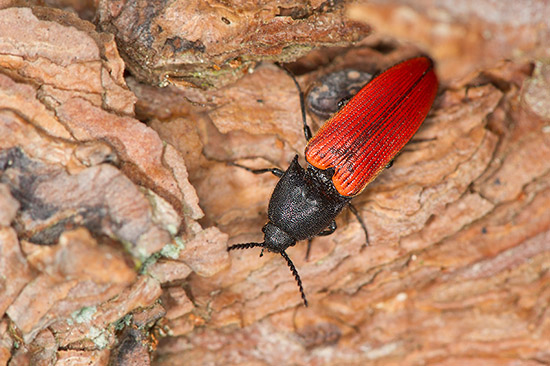On a hot spring day in Oostmalle, Belgium, I stopped for a few minutes to screen some freshly cut Scots Pine tree trunks for beetles. During the hottests parts of the day, treetrunks in a sunny spot always attract a lot of insects.
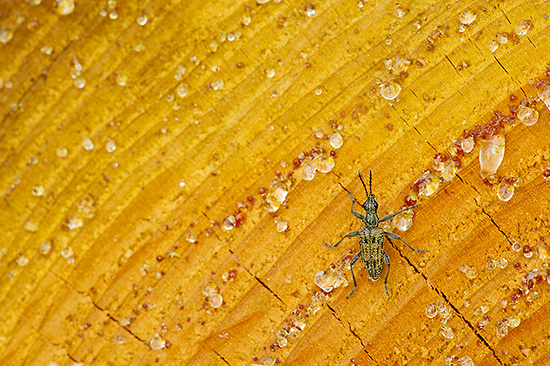
I immediately noticed a lot of bee and fly activity around and on the trunks. Many of the insects gather here to mate and to lay their eggs in the dead wood. Unfortunately this is an ecological pitfall trap for the insects larvae, as the tree trunks are often removed within a few weeks. Which is much earlier than the larvae can develop and leave the trunks…
For the photographer and entomologists it is an easy way to observe species which aren’t often so easy to find, because of their cryptic colours. A good example is the Ribbed Pine Borer, Rhagium inquisitor, a cryptic coloured Longhorn Beetle. I soon found several specimens sitting on the cut surface of the Scots Pines. On the back of the Pine trunks, a little more in the shadow, this gave nice photographic opportunities with the Longhorns contrasting nicely with the orange colour of the Pine wood. Moreover the structure of the wood with the fresh resin drops, gave the picture a final touch. I used a reflector screen to lighten the beetle’s details a little bit up. Under here images from a male, a female and a couple.
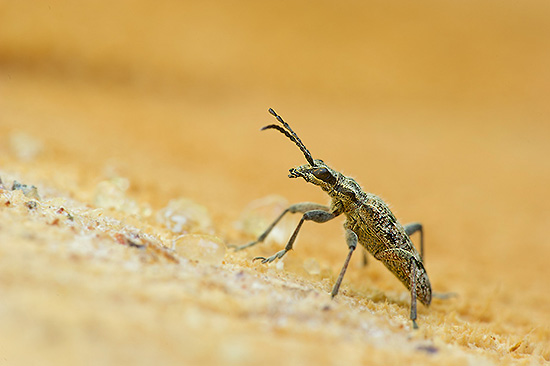
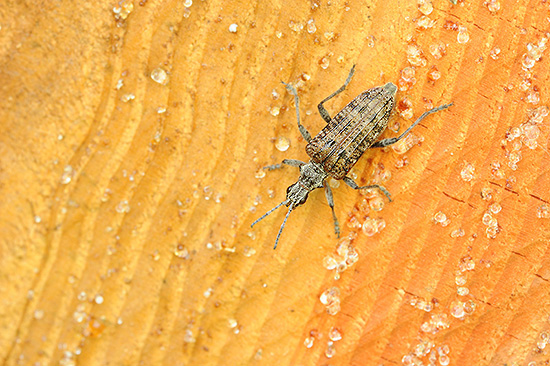
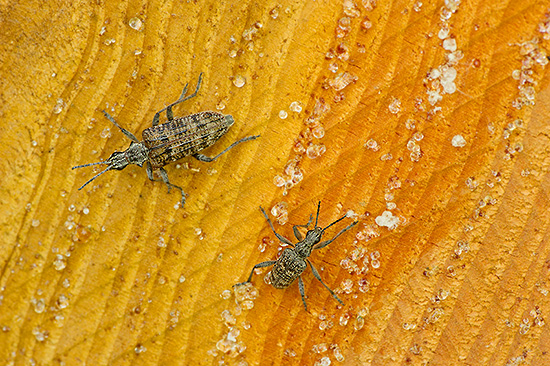
Under here an image from mating Ant Beetles, Thanasimus formicarius. This species belongs to the genus of the Cleridae, the Checkered Beetles. It is very often attracted by freshly cut wood from conifer trees. It is a ferocious hunter, who patrols the bark of tree trunks in search for smaller insects and other potential prey.
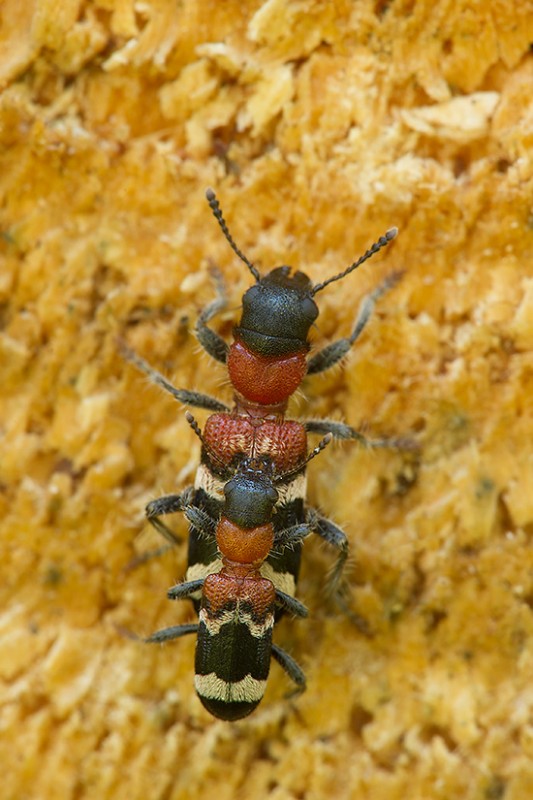
When looking more carefully and screening the bark very slowly for other beetles, I found several other beetle species, such as some other Longhorn beetles, a Pyrochroa species, Click beetles and some Scolytidae.
Under here another image from the Ribbed Pine Borer showing how well the beetle is camouflaged, when sitting motionless on a piece of bark.
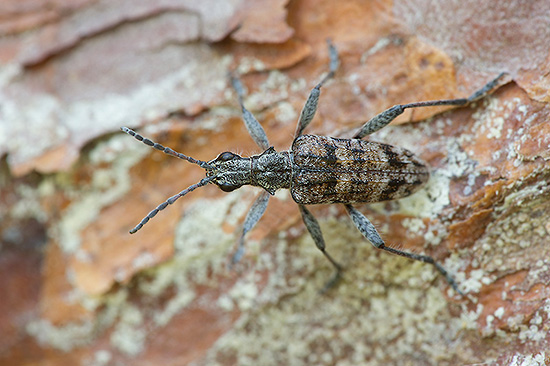
Under here another image from the Ant Beetle on the bark of the Scots Pine.
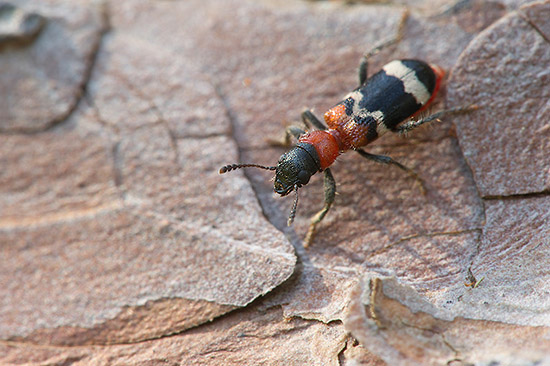
Under here an image from the Click Beetle ‘Ampedus cinnabarinus’, of which I found several individuals running around or hiding in bark cavities. The larvae of this Click Beetle species, Ampedus cinnabarinus, live in decaying wood from deciduous trees and conifers. The larvae predate on the larvae of Stag Beetle species, as well as on Longhorn Beetles.
